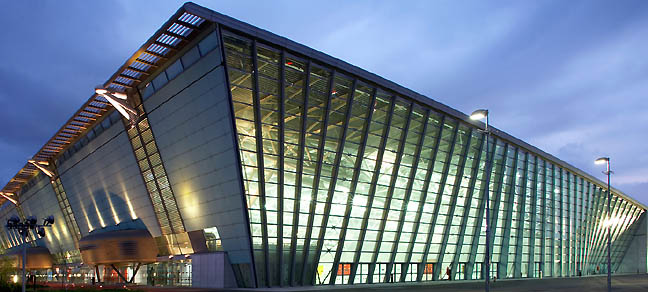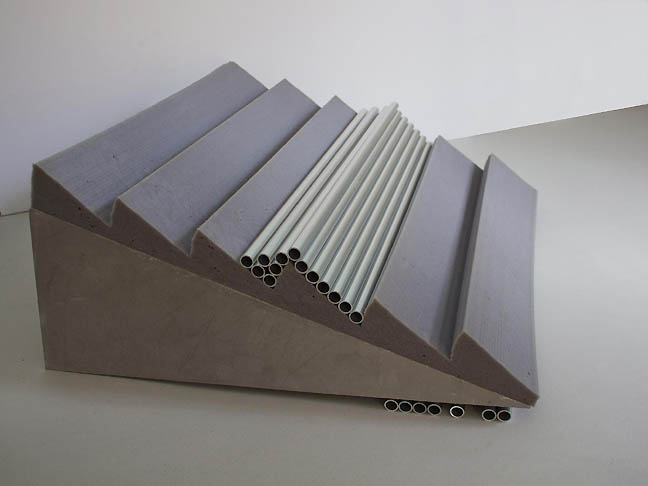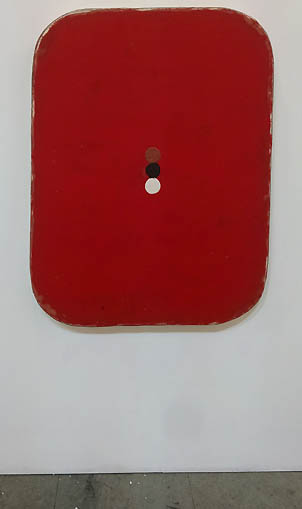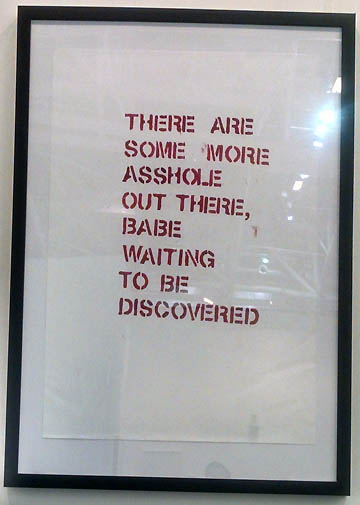
|
||
|
Portland art blog + news + exhibition reviews + galleries + contemporary northwest art
|
||
Artissima 2014: Travelogue by Merridawn Duckler The Italian artist Maurizio Cattalan "non-curated" Shit and Die, a scatological sub-element of the 2014 art fair in Turin, known as Artissima. I went to the commercial fair wondering if this septic spirit seeped over. Cattalan's aesthetic of theft, effigy and atavism are deeply modern. His kneeling Hitler's and suicidal Pinocchio's suggest an idealist's bruised notion of the world and the schoolboy's bravado; he exposes hypocrisy, but claims to start with himself.
 Lingotto Fiere, Torino Italy But Artissima, in Oval Lingotto Fiere, built to accommodate the 2006 Winter Olympic Games, is unabashedly beautiful—both the gorgeous Italians wandering the stalls and the gorgeous art hung inside them. Floor-to-ceiling glass is more palazzo than cathedral; made to impress humans, not gods. The fair has 124 galleries representing 27 countries. The curated work is divided into sections; Present Future, from young, emerging artists; Back to the Future, influential artists from the 1960's-80's, PER4M, performative works plus artists books, art magazines, ephemera, floating curatorial conversations and espresso. Just as millennials flock to music festivals—hey, why pay for one band when you can hear ten—art fairs are growing in scope and influence, sucking collectors, buyers, curators and artists to the same magnetic center. In this global post-Google-economy where anything anywhere is available at a click, I'm struck by how art holds fast its status as dimensional object. Visual art in situ engages our senses in ways no reproduction can reproduce. Of course, I'm also looking for trends, aggregates, the international pulse. In no way do I feel hampered by the fact that I've never been an art fair before. But that's just me.  Harland Miller, I Am the One I've Been Waiting For Text continues to be present but super-sized and likelier to reference whole books than mere words. Harland Miller's "I Am the One I've Been Waiting For" is a Penguin cover blown up and worn out, a pocket paperback for giants. Sculpture is very strong and it's floor-based rather than pedestal. In Zoe Giabouldaki's "Sauce for Life" smashed cell phones and crystals sit organized on a metal workbench, taking on qualities more alchemical than utilitarian, which makes sense as our devotion to them grows. Video, omnipresent in museum shows is still expensive at the commercial level. Maybe it's best done by stacking genre like a Neapolitan pastry. Guatemalan artist Regina Jose Galindo performed "Black Sheep" during an art residency where she lived with (and possibly like) mud-trotting sheep. That site-specific act is now a mesmerizing shimmering, Renaissance-painting sized flat-screen video, next to a photograph of the artist, naked and ecstatic. "Do they go together?" I ask the gallerista. "It is not from the video but nevertheless accompanies the video," he informed me with art world gravitas, not unmixed with kindness. The galleristas and gallerinas look like people asked to step aside during a Paper shoot as too beautiful to include.  Zoe Giabouldaki, Gadani Beach, 2013 Zoe Giabouldaki is from Athens and the Greek art is very strong, as is work from Prague and Vienna. Cattalan has said that he thinks Turin will be the next Berlin and maybe Greece is also hoping to be the next Berlin, though there’s every possibility Berlin is still trying to be the next Berlin. Work by women is well represented. In Past Present I come across a bed where a female form lay under a fluffy coverlet, hair spread over the pillow. When I bend to examine the very realistic hair it turned out to belong to a very realistic head. Artist have slept, spat, masturbated and sat naked for art, but this piece by the Chinese artist Chu Yun called "This is Arianna" felt new, shocking, gentle, poetic and political. Each young girl takes a pill and sleeps for one hour, only to be replaced by another.  Chu Yun, This is Arianna  Manuel Cerutti, Il Sospetto It is difficult to be in Italy, country of some of the worlds' greatest museums, and not wonder about the present-day fate of painting. In Isaac Brest's framed sheet rock "Jorge Rivero P-3" the wall text says this is "waiting to be a painting." Masterful, representational paintings by Manuel Cerutti show that an old-fashioned form has not lost its power, though in his work "Il Sospetto" a painting of a canvas turns away from the viewer suggests painting itself may be what is "suspected." Otis Jones' "Red with three circles, one black" is a dream of emotional geometry; liquid, sexy painted surfaces on hard-scrabble, povre construction is humble, knowing, enigmatic and stellar. He proves that dots and blobs may be the greater eloquence, though across the aisle a text piece that reads "There Are Some More Asshole Out There Waiting to be Discovered" might have the last laugh.  Otis Jones, Red with three circles, one black 
I catch two performative works—a dull open studio by Kate Steciw and Rachel De Joode where the artists, as blah and blah, putter a stage, making bad art. At point one complains she can’t hear the other through her headset. "I mean us," she says, "I'm not interested in them" and she points to the audience. Ironic or undisguised narcissism? Better is Tobias Kaspar's "Friends, Lovers and Financiers" where solemn faced youngster march around us in a catwalk of perplexingly adult and ill-fitting clothing. Fashion and clothing references are everywhere—we are after all, an hour from Milan. After five hours I'm wondering if I could slip into one of those sleeping hours. But I'm irresistibly drawn to the artist's books and ephemera. I'm admiring a pamphlet of beautiful photographs when the dealer takes my arm. Paolo Ventura she says. Yes, they're beautiful, thinking this Italian for "buy me." No, she says, Paolo Ventura—he's right over there. And over ambles Mr. Ventura with a face and jacket so deeply Italian I feel arias surrounding us as we chat. He tells me Turin is a small town he says, with an easy way of life. As he speaks I feel the international art fair slip away. I'm in the country of artisans, Catholics, beauty and sadness. We have come to share our love of the material world, even as the veil slips away. Posted by Guest on November 26, 2014 at 19:21 | Comments (0) Comments Post a comment Thanks for signing in, . Now you can comment. (sign out)
(If you haven't left a comment here before, you may need to be approved by
the site owner before your comment will appear. Until then, it won't appear
on the entry. Thanks for waiting.)
|
| s p o n s o r s |
 |
 |
 |
 |
 |
 |
 |
 |
 |
 |
 |
 |
 |
 |
 |
 |

|
Site Design: Jennifer Armbrust | • | Site Development: Philippe Blanc & Katherine Bovee | |

